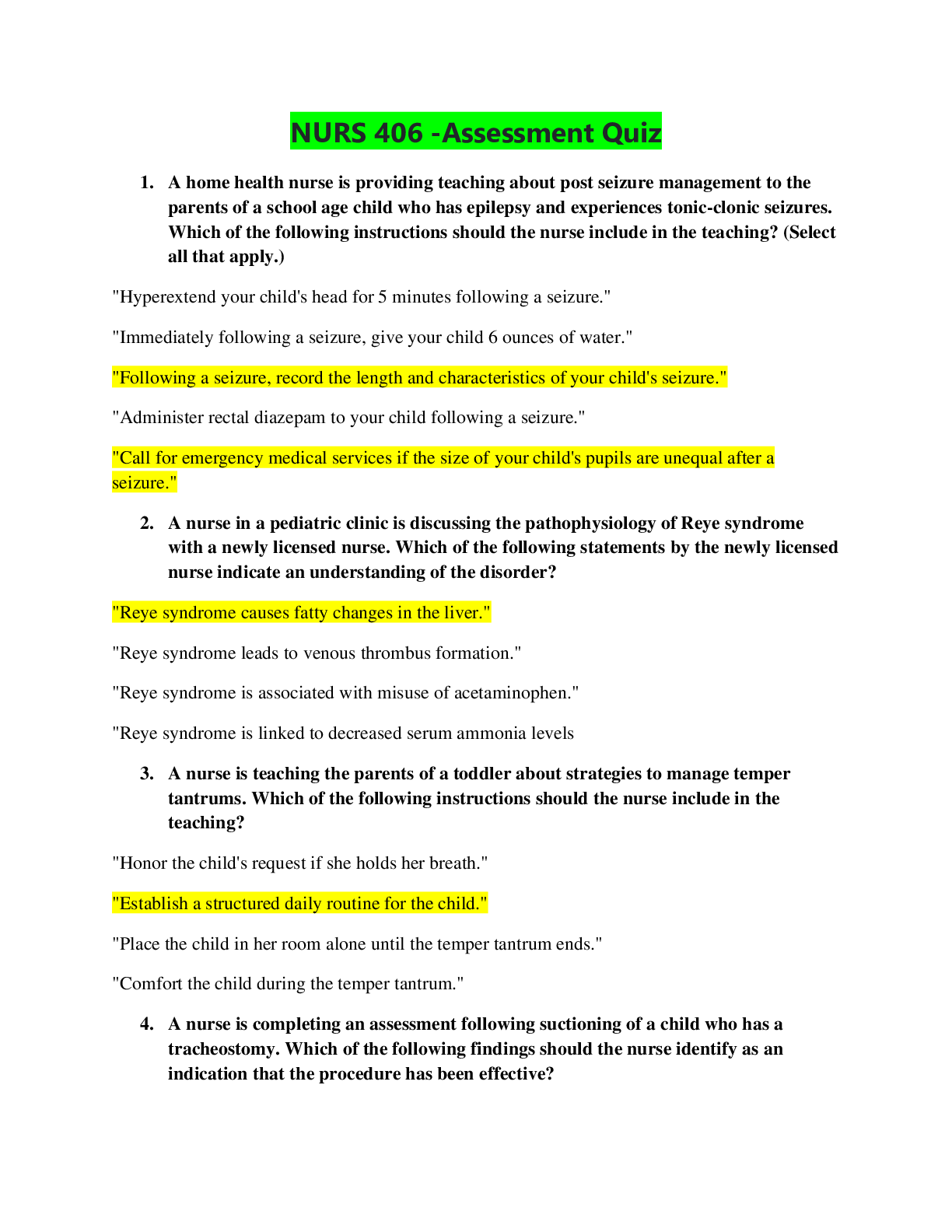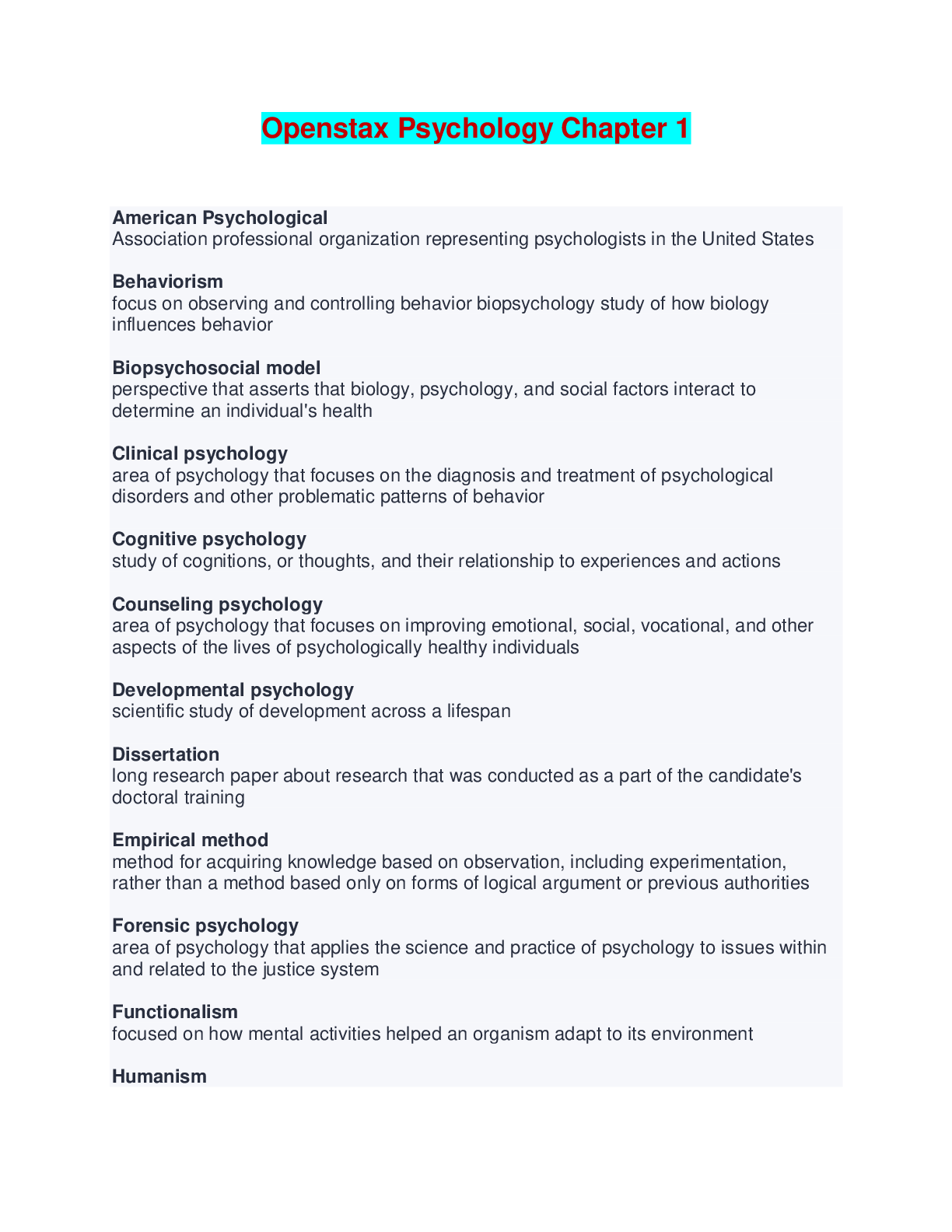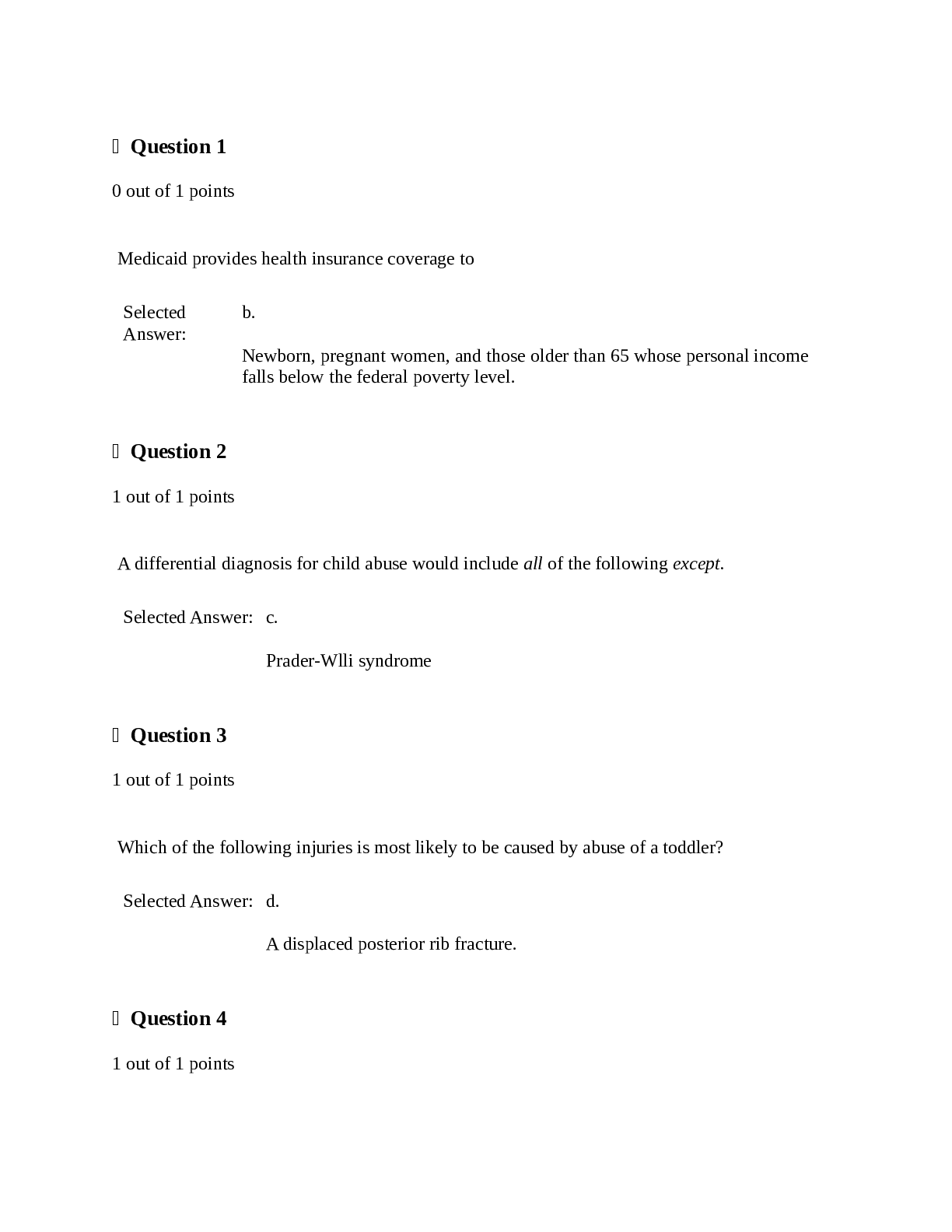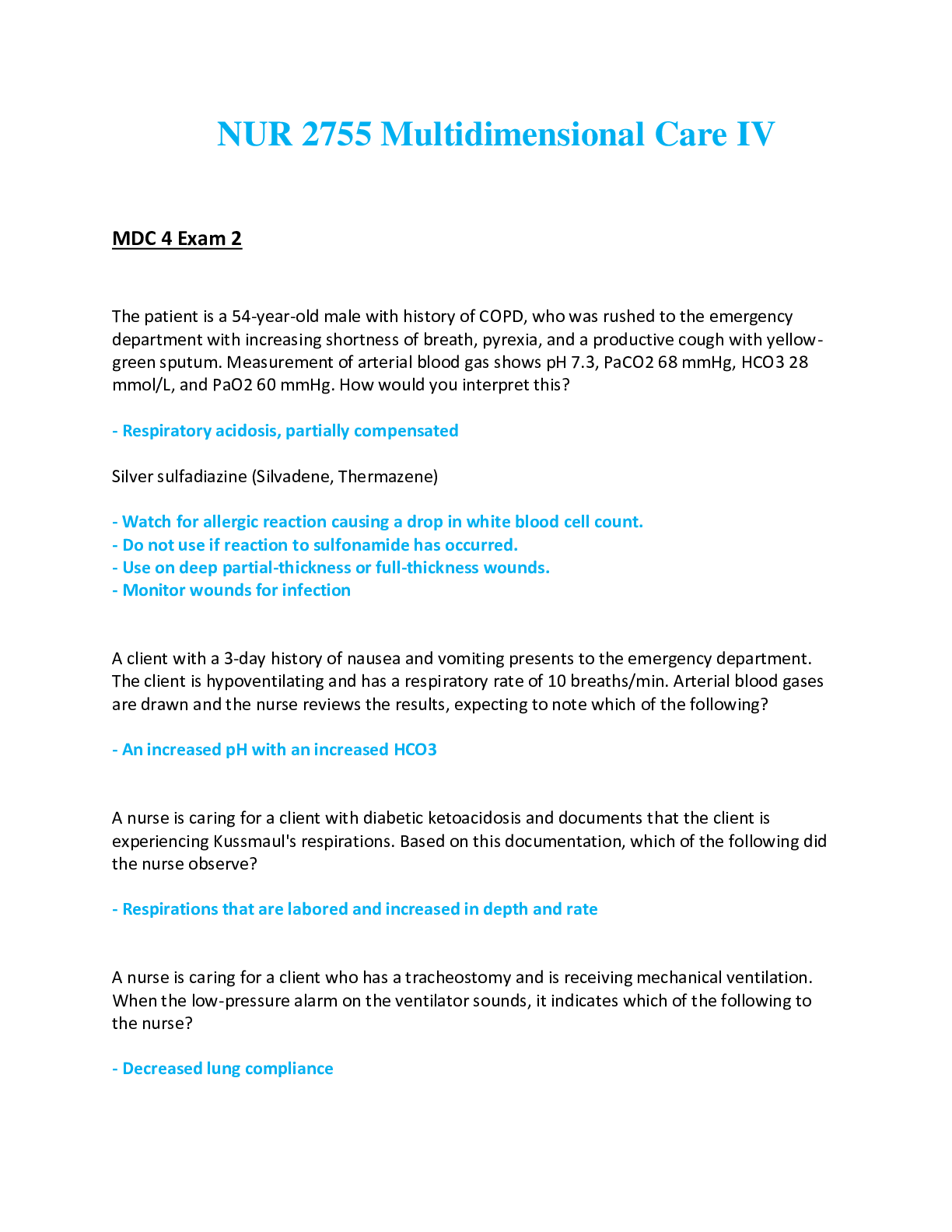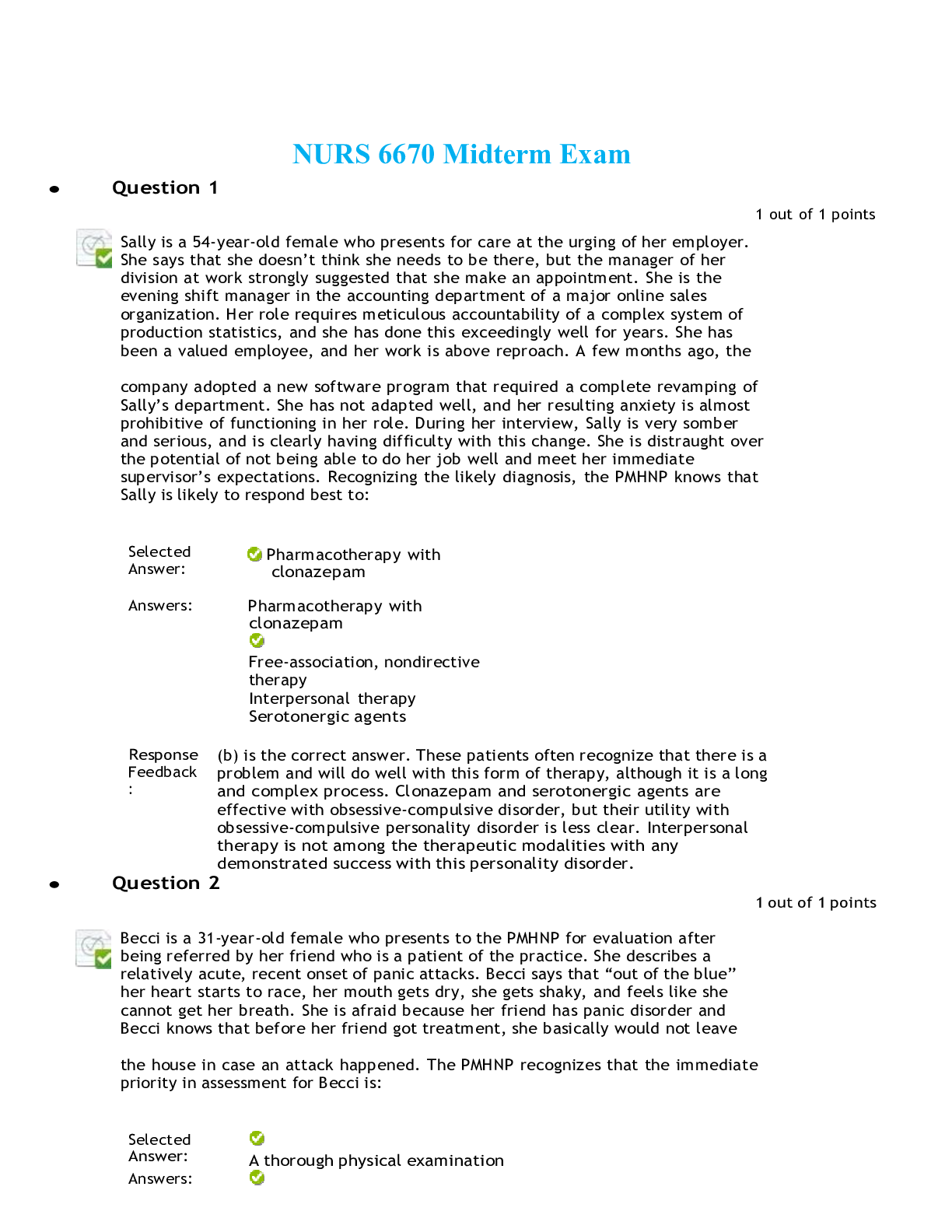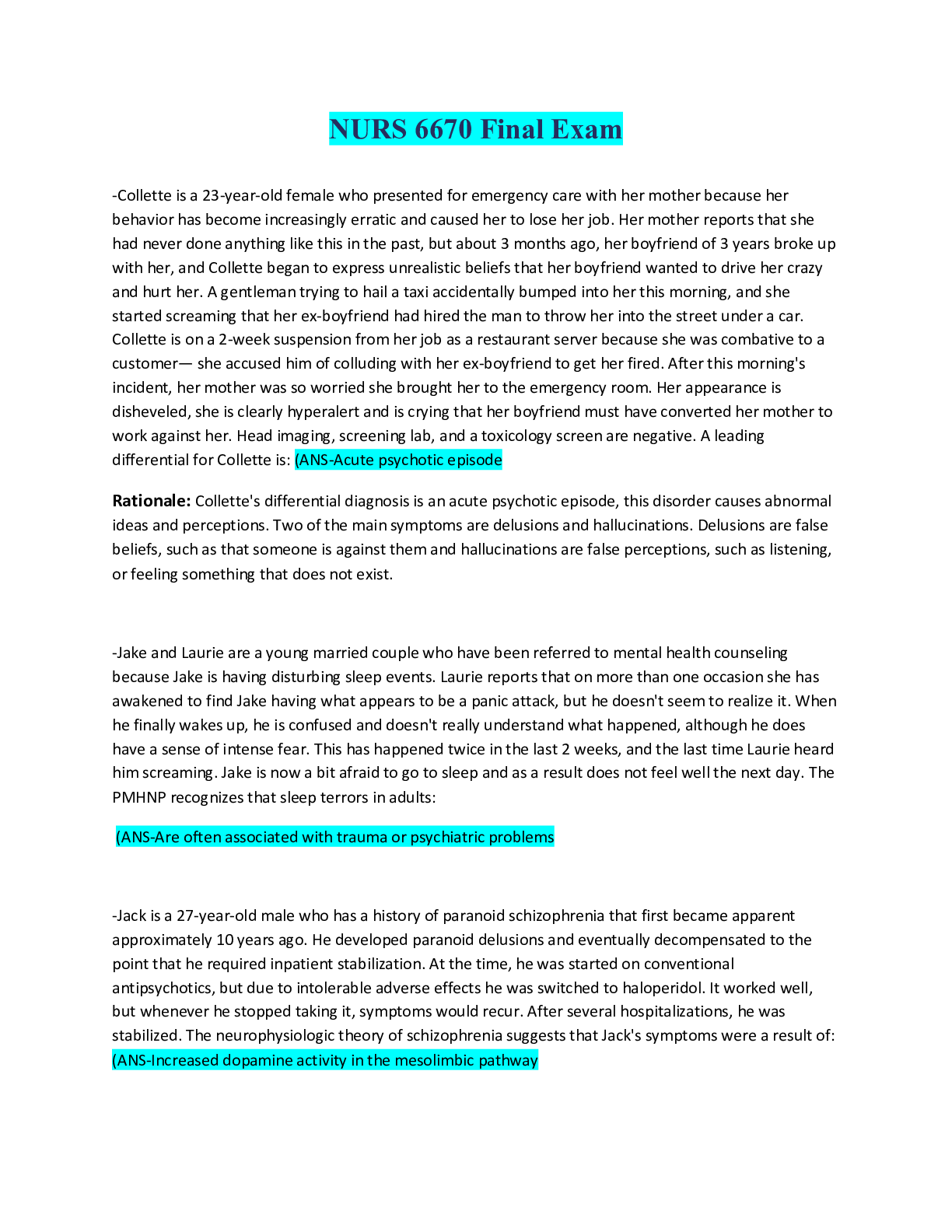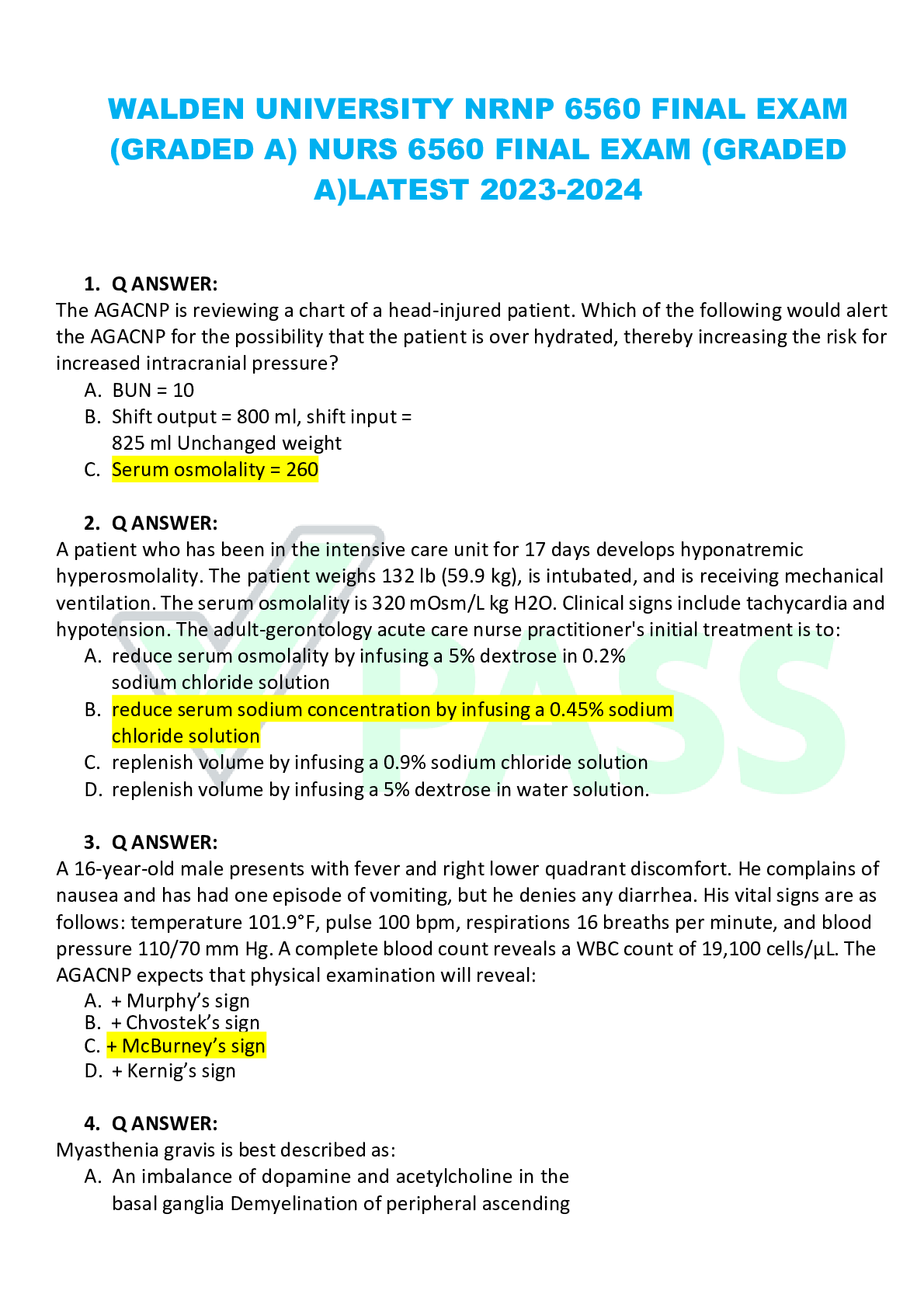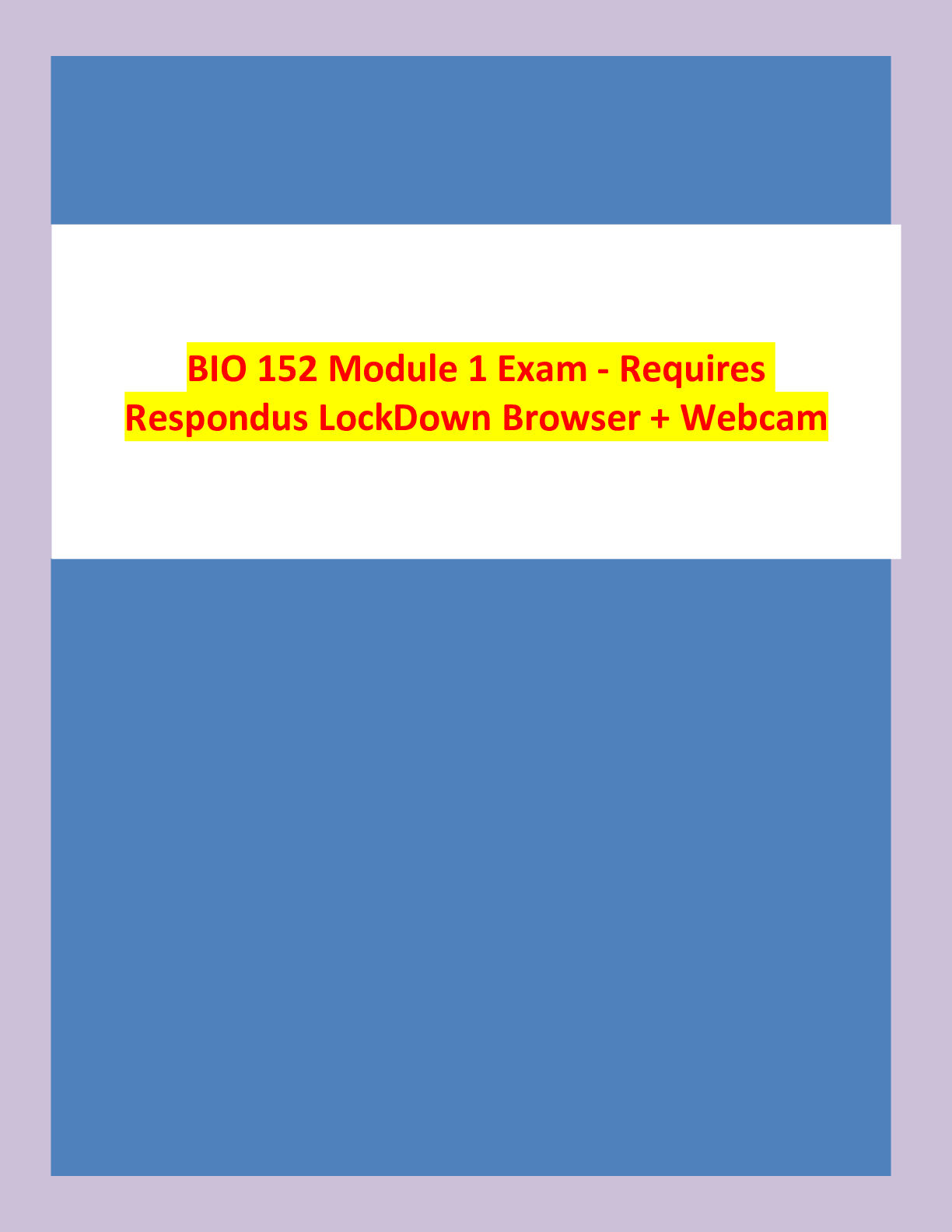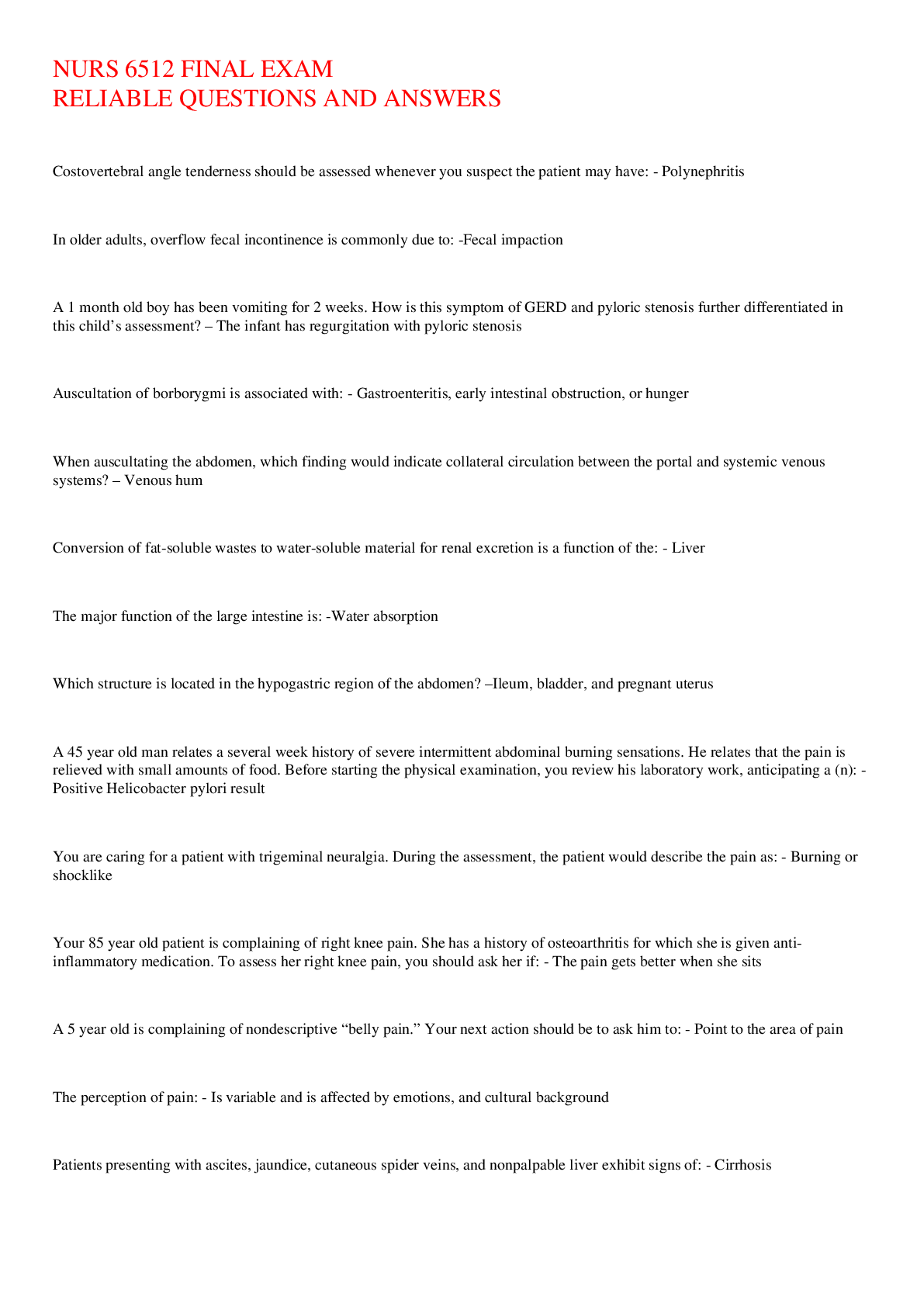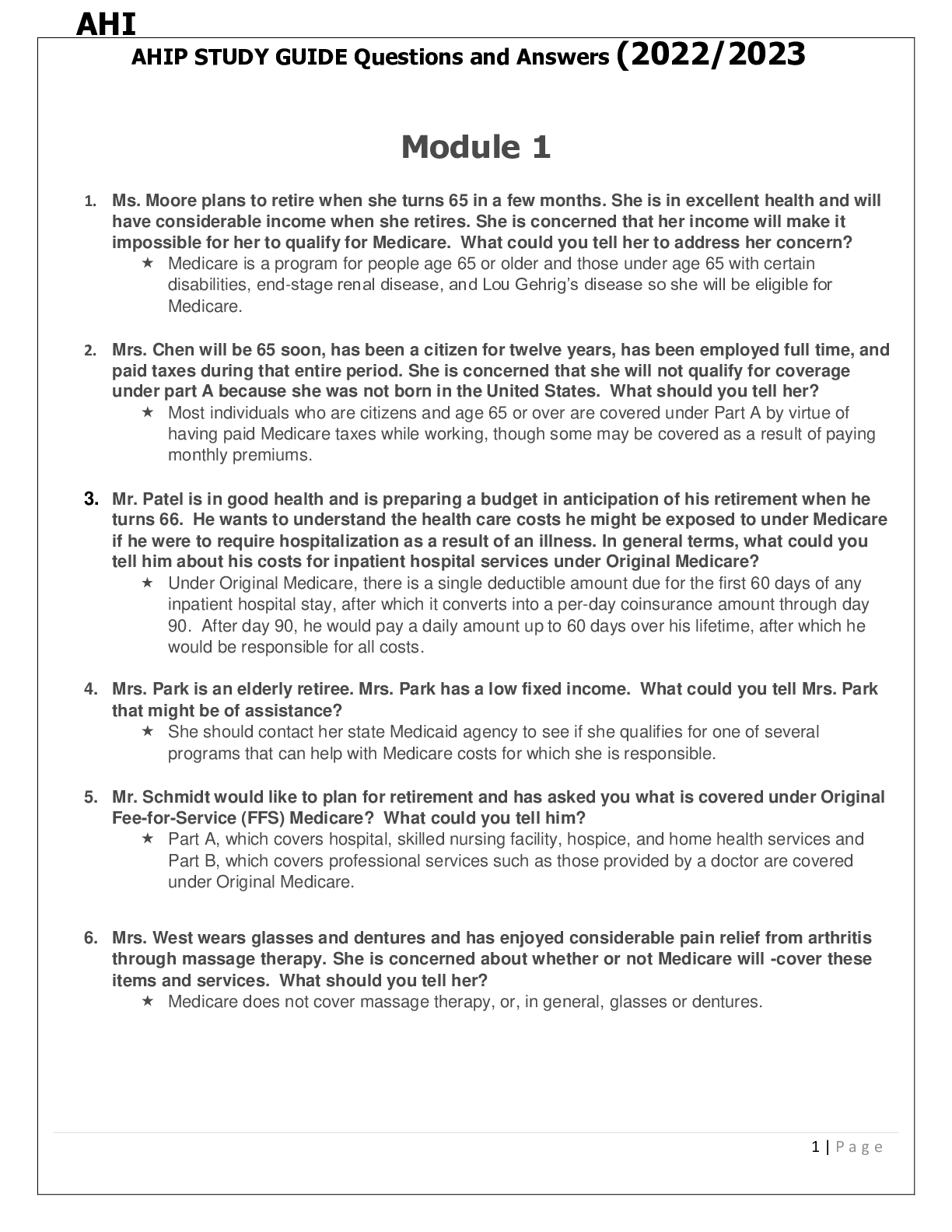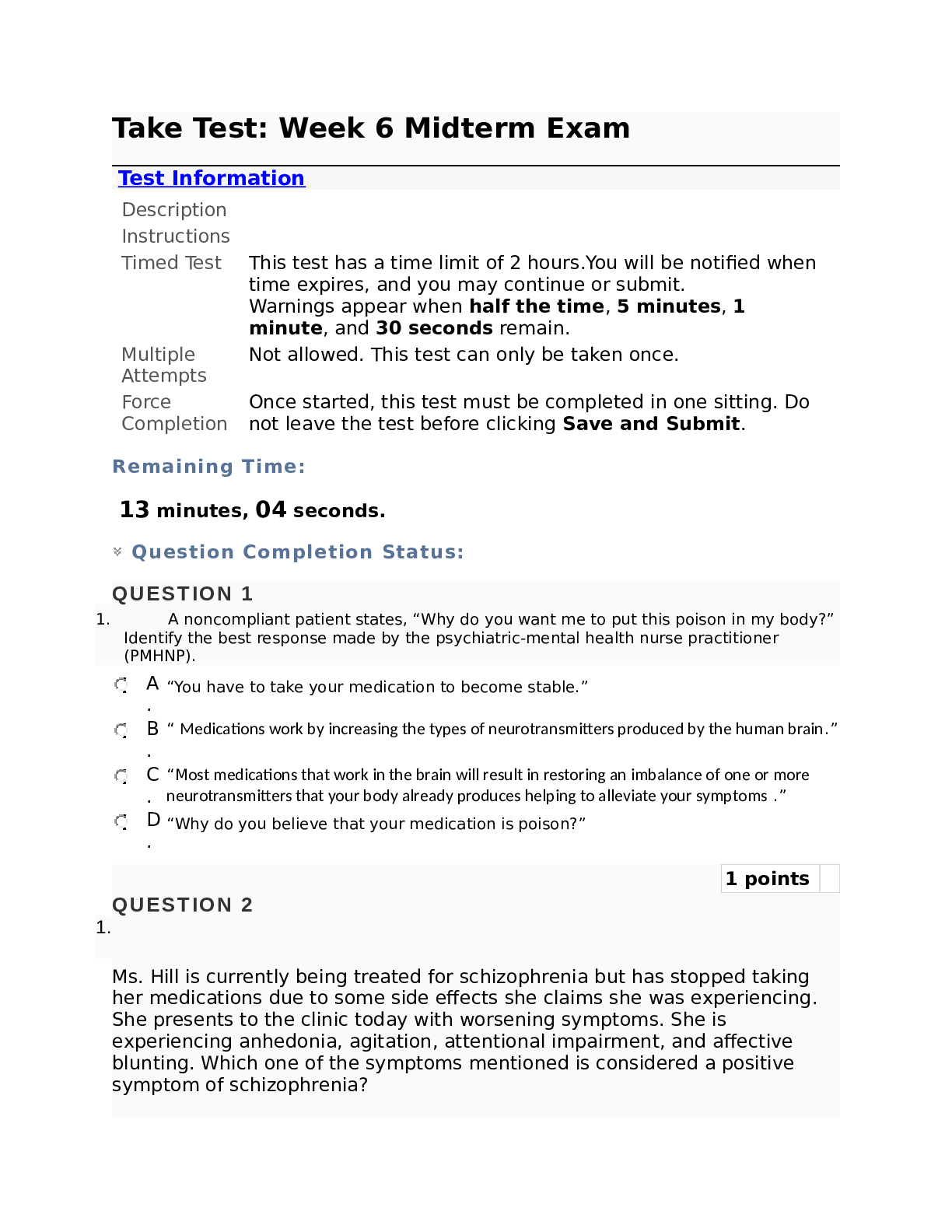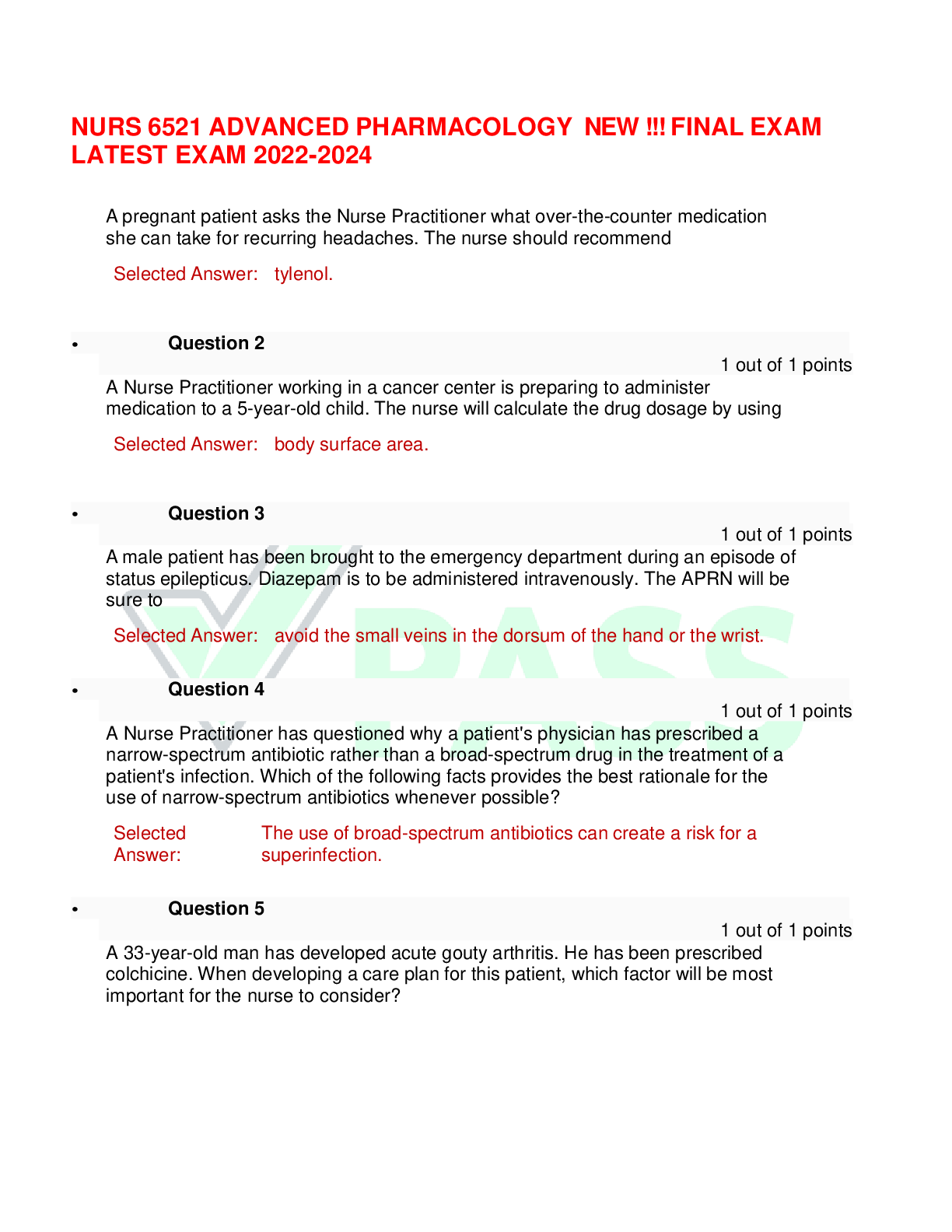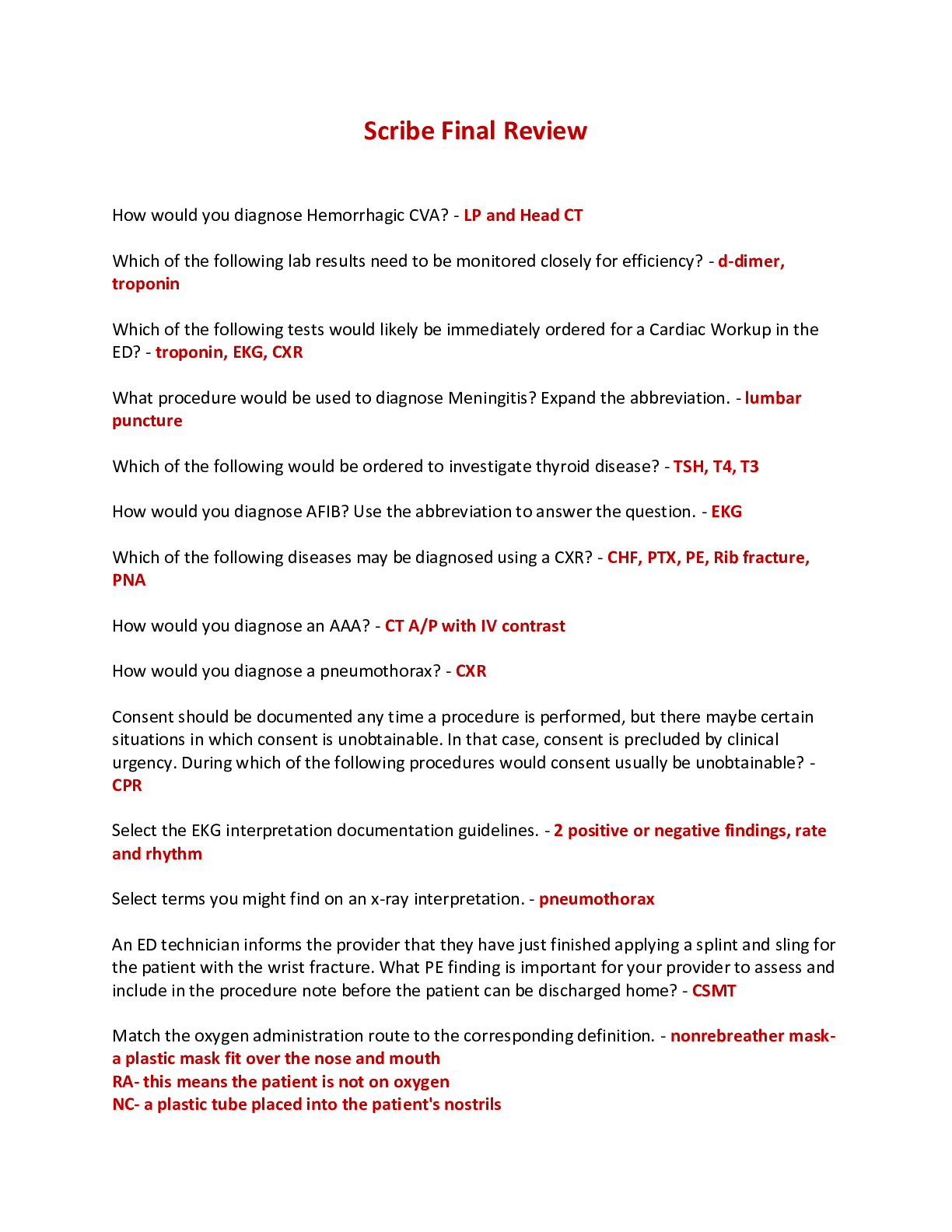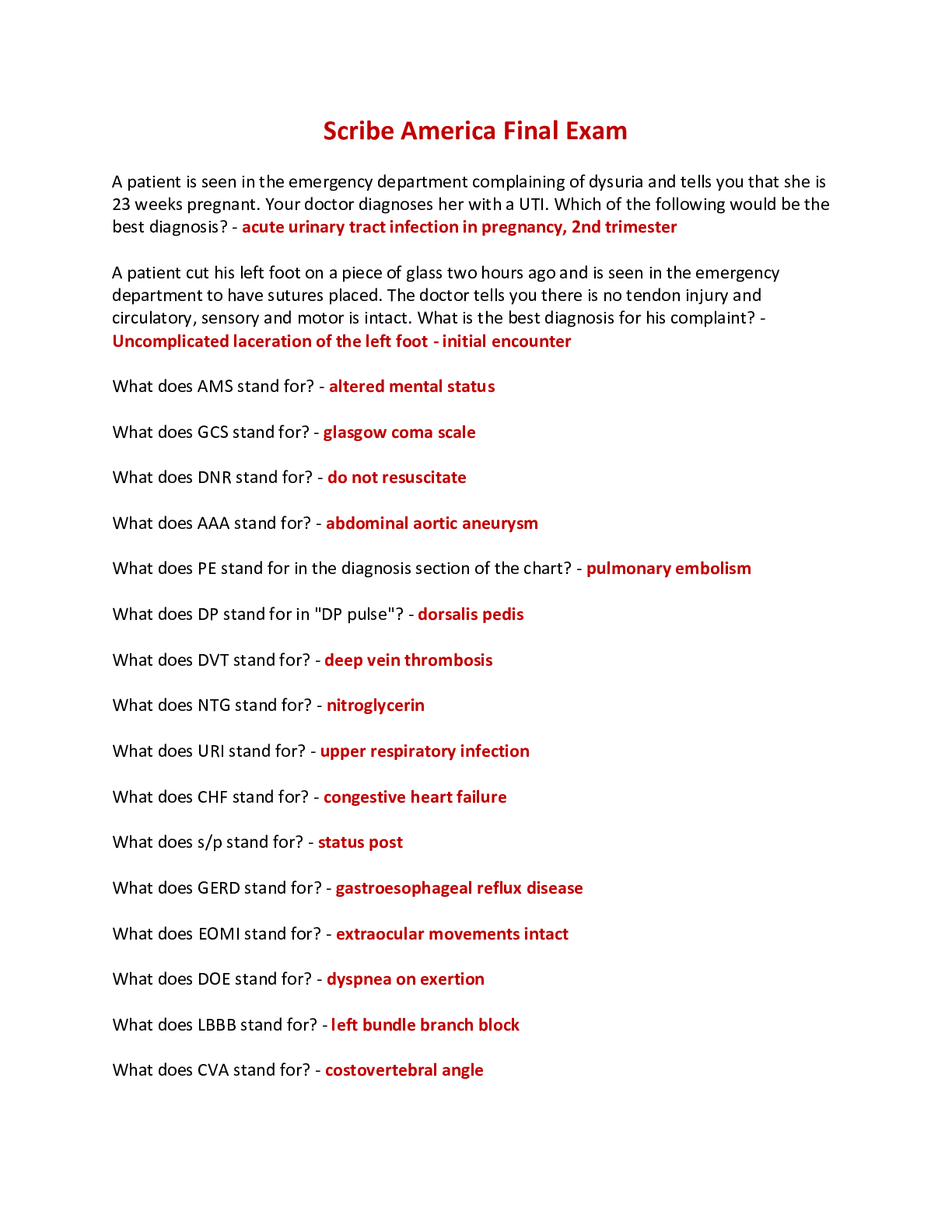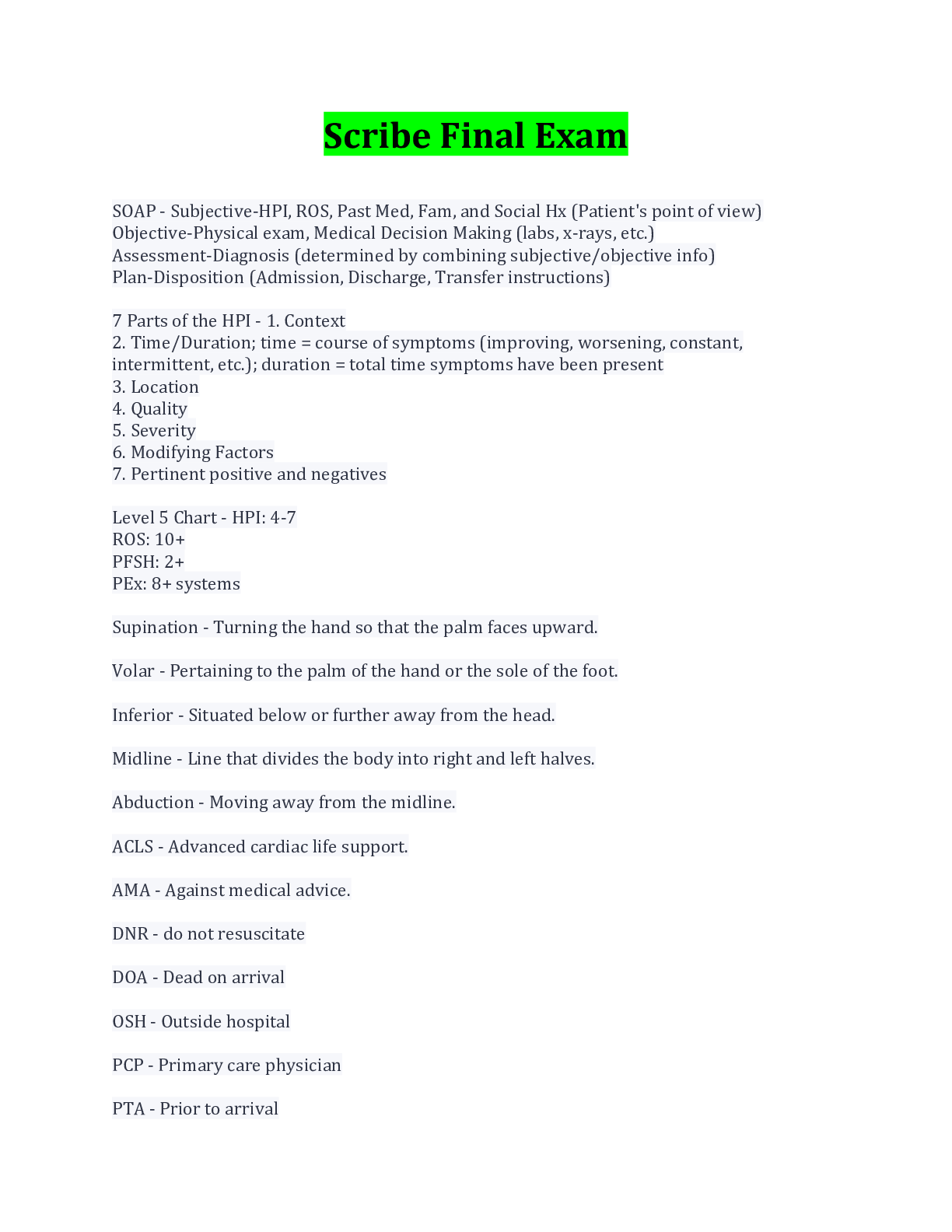NSG 3500 Labor and Delivery Exam - Questions and Answers
Document Content and Description Below
NSG 3500 Labor and Delivery Exam - Questions and Answers Laboring down A process by which a health care team allows a laboring woman whose cervix is 10 cm dilated, to hold back from pushing until sh... e has a natural urge or readiness to deliver is urgent. Delayed cord clamping After 1-3 minutes. To decrease ANEMIA (preterm, term) and INTRACRANIAL HEMORRHAGE (preterm). Clamped 2cm and 5 cm from the base. Bishop score Determines maternal readiness for labor by evaluating whether the cervix is favorable by rating cervical dilation, effacement, consistency, position, and station Objective of fetal heart rate monitoring (electronic fetal monitoring) The primary objective of intrapartal (the time from the onset of labor to the delivery of the placenta) FHR monitoring interpretation is to assess the adequacy of fetal oxygenation during labor. Shoulder Dystocia Head is delivered but shoulders become impacted above the mother's symphysis pubis. One sign of shoulder dystocia is when the fetal head emerges on the perineum (crowning), it retracts instead of protruding with subsequent contractions (turtle sign) Shoulder dystocia management *nurse stay calm and call for immediate help*, assist provider, McRoberts maneuver (bring legs as far up as possible to ear, opens up pelvis and allows baby to move), suprapubic pressure (must be on top of pt on stool and apply suprapubic pressure), avoid fundal pressure (neurological complications), position changes (hands & knees, squatting, left lateral recumbent) Monitor mother for signs of hemorrhage after delivery of infant. Labor comfort measures Position changes: assist the laboring woman into various positions and activities such as walking, standing, sitting, squatting (with the use of the birth ball to help open the pelvis), leaning over a piece of furniture Epidural anesthesia/analgesia Relief from pain of uterine contractions and birth. Block from T10-S5 is required Woman sits with her back curved or assumes a modified Sim's position with shoulder parallel, legs flexed, and back arched. Woman is placed on side following epidural. Harder when a woman is obese because she cannot assume the necessary position. Excess tissue hides landmarks. Disadvantages: Limits woman's ability to move freely, orthostatic hypotension (most common complication), dizziness, sedation, weakness of legs Nurse must make sure to preload the patient with a rapid infusion of IV fluids to increase blood volume and cardiac output to help prevent complication of post-epidural hypotension. Induction of labor chemical or mechanical initiation of uterine contractions before their spontaneous onset for the purpose of bringing about birth Induction of labor methods ■Prostaglandins applied cervically to ripen the cervix ■Administration of IV oxytocin (Pitocin) ■Amniotomy or stripping of membranes. ■Nipple stimulation to trigger the release of endogenous oxytocin Cervical ripening agents Dinoprostone: Misoprostol These agents are most beneficial when the patients bishop score is greater than 6. Augmentation of labor Stimulation of ineffective uterine contractions after labor has started spontaneously but is not progressing satisfactorily. Can be achieved by stripping membranes, providing oxytocin IV or nipple stimulation. Signs of uterine hyperstimulation (Uterine tachysystole) Uterine contractions that last greater than 90 seconds and occur more often than every 2 minutes Uterine resting tone greater than 20 to 25 mm Hg with a peak pressure greater than 80 mm Hg (IUPC monitoring) Non-reassuring FHR and pattern (baseline less than 100 or greater than 160 BPM, absent variability, repeated late decelerations or prolonged deceleration Hypertonic uterine dysfunction Uterine hyperstimulation or hypertonic uterine dysfunction is a potential complication of labor induction. It is defined as either a series of single contractions lasting 2 minutes or more OR a contraction frequency of five or more in 10 minutes. [Show More]
Last updated: 5 months ago
Preview 1 out of 11 pages

Reviews( 0 )
Document information
Connected school, study & course
About the document
Uploaded On
Dec 16, 2023
Number of pages
11
Written in
Additional information
This document has been written for:
Uploaded
Dec 16, 2023
Downloads
0
Views
76







